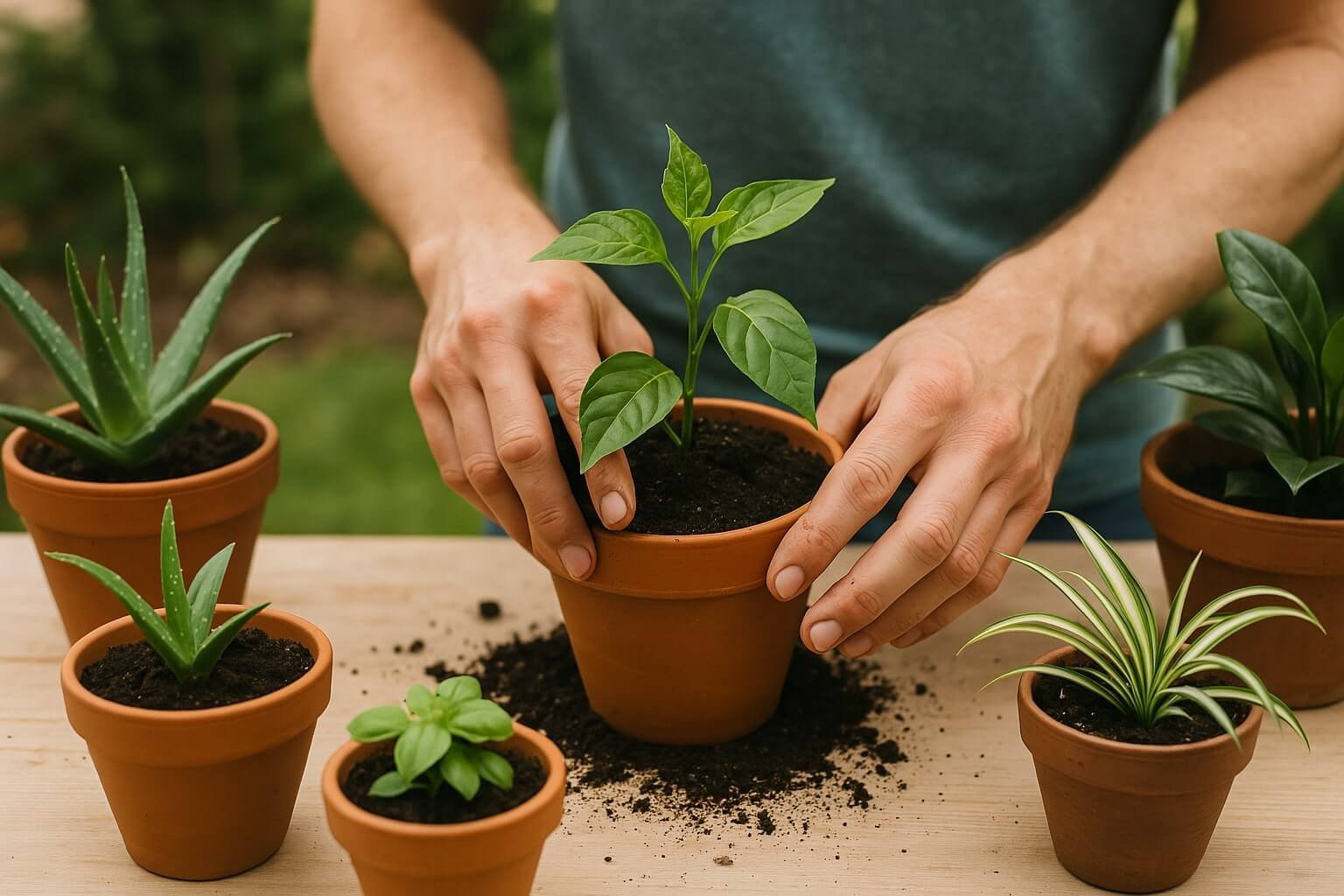The Beginner’s Guide to Container Gardening
Container gardening is transforming homes, balconies, and even office corners into miniature green sanctuaries. Whether you’re short on space or just beginning your gardening journey, learning how to grow small plants in pots is your key to unlocking fresh greenery in compact spaces.
In this comprehensive guide, we’ll walk you through everything you need—from choosing the right pots to mastering watering techniques—so your tiny potted plants thrive.
Why Choose Potted Plants?
Potted plants aren’t just cute—they’re strategic:
- Space-saving: Perfect for apartments, small yards, and indoor living.
- Portable: Easily rearrange or transport your greenery.
- Customizable: Choose colors, shapes, and designs that match your vibe.
- Healthy control: You control soil, fertilizer, and water, minimizing pests and diseases.
Understanding Plant Basics: What to Know First
Before diving in, here are a few foundational things to keep in mind:
- Light requirements: Some plants thrive in shade, while others need bright sun.
- Climate compatibility: Pick plants suitable for your region’s temperature and humidity.
- Growth habit: Some plants grow vertically, others spread horizontally—make sure the pot suits the growth.
Step-by-Step Guide: How to Grow Small Plants in Pots
Step 1: Choosing the Right Pot
The pot is your plant’s home—don’t pick it randomly.
- Material matters: Clay pots offer breathability, while plastic retains moisture better.
- Drainage holes: Non-negotiable! Excess water must escape to prevent root rot.
- Size balance: Too small, and roots suffocate; too large, and soil stays soggy.
Pro Tip: Use pot saucers to protect surfaces and collect excess water.
Step 2: Picking the Perfect Soil
Forget generic garden dirt—potting soil is key.
- Well-draining mix: Look for soil with perlite or vermiculite.
- Nutrition-rich: Some mixes come with slow-release fertilizers.
- pH balanced: Most small plants prefer neutral to slightly acidic soil (pH 6.0–7.0).
Step 3: Selecting the Right Plants
Small plants that flourish in pots include:
| Plant Name | Light Needs | Watering Frequency | Best for Beginners |
|---|---|---|---|
| Succulents | Bright light | Every 2–3 weeks | ✅ |
| Herbs (Basil, Mint) | Partial to full sun | 2–3 times/week | ✅ |
| Spider Plant | Indirect light | Weekly | ✅ |
| Peace Lily | Low light | Weekly | ✅ |
Choose based on your time commitment and light conditions at home.
Step 4: Planting Properly
Here’s how to do it like a pro:
- Add a layer of pebbles at the base (optional, for drainage).
- Fill one-third with soil mix.
- Gently place the plant, spreading its roots.
- Fill remaining soil, pat lightly, and water thoroughly.
Make sure not to bury the plant too deep—its base should align with the soil surface.
Step 5: Watering Wisely
Watering is an art:
- Check moisture: Stick your finger 2 inches into the soil. Dry? Time to water.
- Avoid overwatering: Yellow leaves often signal too much water.
- Morning routine: Water early to prevent evaporation and fungal growth.
Step 6: Feeding and Fertilizing
Small plants need regular nutrients:
- Use liquid fertilizer every 2–4 weeks during growing season.
- Consider organic alternatives like compost tea or worm castings.
- Stop fertilizing during dormant winter months.
Step 7: Providing Proper Light
Rotate pots weekly for even growth. Use grow lights if your room lacks natural sunlight. Pay attention to leaf color—pale leaves may mean too little light.
Step 8: Preventing Pests and Diseases
Prevent is better than cure:
- Wipe leaves occasionally to remove dust and pests.
- Use neem oil or soap sprays for natural pest control.
- Avoid overcrowding: good air circulation discourages fungi.
Step 9: Repotting When Needed
Watch for these signs:
- Roots poking out from drainage holes.
- Soil drying too quickly.
- Plant seems cramped.
Repot every 1–2 years to keep your plant happy.
Maintenance Checklist (Printable Version Idea)
- Water regularly (based on plant type)
- Fertilize monthly (during growing season)
- Inspect for pests weekly
- Rotate pot for sunlight
- Repot when root-bound
Frequently Asked Questions
How often should I water potted plants?
It depends on the plant, pot material, and weather. Most small plants need watering every few days—check the soil moisture before watering.
Can I grow vegetables in small pots?
Absolutely. Leafy greens like spinach, lettuce, and herbs grow well in pots. Just ensure they get enough sunlight and space.
Why are my plant’s leaves turning yellow?
Usually due to overwatering or lack of light. Check your drainage and move the pot to a brighter spot.
What are the easiest small plants to grow in pots for beginners?
Succulents, herbs like mint and basil, spider plants, and peace lilies are excellent starters.





